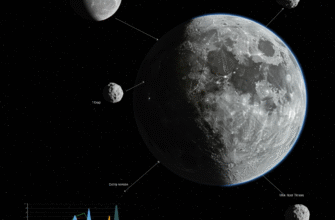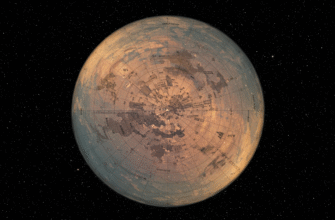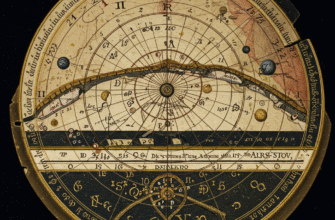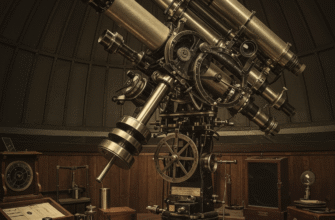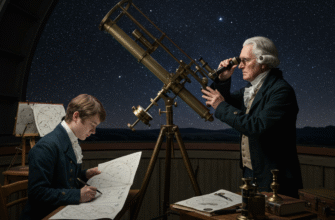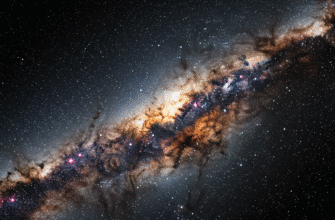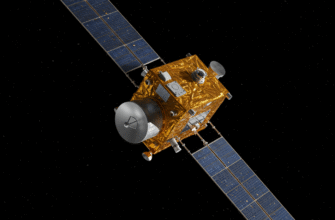The late twentieth century buzzed with cosmological queries. While the universe’s expansion, a truth unveiled by Edwin Hubble’s diligent observations decades prior, was accepted, its destiny remained an open question. Would the relentless pull of gravity eventually rein in this cosmic stretch, perhaps culminating in a “Big Crunch”? Or was an eternal, albeit slowing, expansion our universe’s fate? Most bets were on a gradual deceleration, a slowdown dictated by the known cosmic inventory of matter and energy.
To chart this cosmic trajectory, astronomers required dependable “standard candles” – celestial objects whose intrinsic brightness is known. Comparing this inherent luminosity to their apparent brightness as seen from Earth allows for distance calculation. For peering deep into the universe’s history, and thus its expansion saga, Type Ia supernovae emerged as the beacons of choice. These cataclysmic stellar detonations typically happen when a white dwarf star in a binary dance siphons excessive material from its partner, or when two white dwarfs collide and merge. This pushes the white dwarf past the Chandrasekhar limit, a critical mass threshold, igniting a runaway nuclear fusion that tears the star asunder. Vitally, these explosions boast a remarkably consistent peak luminosity, rendering them superb distance markers across the vast cosmic ocean.
It was in this scientific climate that two pioneering groups embarked on ambitious quests to gauge the universe’s expansion by hunting these far-flung Type Ia supernovae. One of these was the High-Z Supernova Search Team, an international consortium established in 1994, spearheaded by astronomers Brian P. Schmidt and Nicholas B. Suntzeff. The “High-Z” signifies high redshift, a marker for extremely distant objects whose light has been stretched to longer, redder wavelengths by the universe’s ongoing expansion. Alongside Schmidt, key figures such as Adam Riess and Robert Kirshner, among a host of other talented individuals, contributed their varied expertise to the formidable task of locating and scrutinizing these faint, transient cosmic events. Their objective was unambiguous: to amass sufficient supernova data to precisely determine the deceleration parameter, a quantitative measure of how rapidly the expansion was presumed to be slowing down.
The Hunt and the Hurdles
The search was a monumental undertaking. High-redshift supernovae are incredibly dim and fleeting, gracing the cosmic stage for merely a few weeks. The team utilized powerful ground-based telescopes, such as those at the Cerro Tololo Inter-American Observatory in Chile, to systematically scan immense sections of the night sky, capturing images of distant galaxies. These fresh images were then meticulously compared with archived ones of the same celestial fields, searching for nascent points of light – the tell-tale signature of a supernova’s birth. Upon identifying a potential candidate, a swift and coordinated follow-up campaign was paramount. This involved leveraging the capabilities of premier observatories, including the Hubble Space Telescope and the Keck Observatory, to confirm the supernova’s classification (it had to be a Type Ia) and to precisely measure its brightness and redshift. This arduous process, repeated diligently over several years, incrementally constructed a valuable dataset of distant supernovae.
As the data began to accumulate through 1997 and into early 1998, the High-Z team, with Adam Riess at the forefront of the analysis, started observing something profoundly baffling. The distant supernovae they were tracking appeared fainter than they should if the universe’s expansion was indeed decelerating under gravity’s influence. In reality, they were considerably dimmer, which suggested they were significantly *further away* than existing models predicted. This startling observation implied a radical notion: the expansion of the universe wasn’t slowing down at all; it was accelerating! Brian Schmidt, initially, was deeply skeptical, suspecting an error in the data or the intricate analysis. The result was so starkly contrary to the prevailing cosmological paradigms that it bordered on the unbelievable. The team undertook an exhaustive re-examination of their entire process: their calibration methods, potential obscuration by cosmic dust, and any evolutionary effects that might cause distant supernovae to differ intrinsically from their nearby counterparts.
Independent Corroboration: A Pillar of Discovery
What lent extraordinary weight to this astonishing finding was the concurrent, independent work of another research group, the Supernova Cosmology Project (SCP), led by Saul Perlmutter. This team was engaged in a similar quest and, remarkably, was arriving at the very same conclusion. Despite being scientific rivals, the fact that two distinct teams, employing different observational techniques and analytical methodologies, converged on such an unexpected result provided immense credibility to the discovery. The SCP had been dedicated to this problem since 1988 and presented their initial evidence for an accelerating universe around the same period. This independent confirmation proved crucial in persuading a naturally skeptical scientific community that a truly revolutionary cosmic truth had been unearthed.
The independent verification by two competing teams, the High-Z Supernova Search Team and the Supernova Cosmology Project, was critical for the acceptance of cosmic acceleration. This wasn’t an anomaly in one dataset. It was a consistent signal observed by different researchers using distinct methodologies. Their combined evidence fundamentally reshaped our cosmological model. This dual discovery process is a hallmark of robust scientific breakthroughs.
Unveiling Dark Energy
If the universe’s expansion is indeed accelerating, some form of energy must be responsible for this outward impetus, overpowering gravity’s unifying embrace on cosmic scales. This enigmatic entity was christened “dark energy.” It was not something directly observed; its existence was deduced from its discernible effect on the universe’s expansion dynamics. Current estimates suggest that dark energy constitutes approximately 68-70% of the total energy density of the cosmos, with dark matter accounting for about 27%, and ordinary baryonic matter—the stuff of stars, planets, and us—making up a mere 5%. The most straightforward candidate for dark energy is Albert Einstein’s cosmological constant, a term he originally introduced into his equations of general relativity to accommodate a static universe and later famously called his “biggest blunder.” This constant represents an intrinsic energy density of space itself. As space expands, more of this energy naturally comes into being, further fuelling the expansion. Alternative, more complex theories propose dynamic fields, sometimes referred to as “quintessence,” whose energy density might vary over cosmic time and space.
The Precision of Standard Candles
The entire discovery hinges on the reliability of Type Ia supernovae as standard candles. Their consistency stems from their origin: they are thought to occur when a white dwarf star, the dense remnant of a star like our Sun, accretes matter from a companion in a binary system. As it gains mass, its core pressure and temperature escalate until it reaches the Chandrasekhar limit—approximately 1.4 times the mass of the Sun. Beyond this point, the electron degeneracy pressure that supports the star fails. The star then collapses and ignites, triggering a runaway carbon fusion reaction that results in a spectacular detonation. Because they all effectively detonate at a similar mass, their peak luminosities are remarkably uniform. Minor variations that do exist can often be precisely calibrated by observing the rate at which their light output declines after reaching peak brightness—brighter supernovae tend to fade more slowly. This “stretch” correction allows for even more precise distance measurements.
The Impact and Lasting Legacy
The revelation of the accelerating universe by the High-Z Supernova Search Team and the Supernova Cosmology Project stands as one of the most profound scientific breakthroughs of the late 20th century. It fundamentally reshaped our understanding of the universe’s composition, its history, and its ultimate destiny. In recognition of their pivotal roles in this discovery, Brian Schmidt, Adam Riess (both from the High-Z team), and Saul Perlmutter (from the SCP) were jointly awarded the Nobel Prize in Physics in 2011.
However, the work did not conclude with this accolade. The confirmation of dark energy’s existence has inaugurated a vast and vibrant new field of research. Scientists are now employing a diverse array of observational techniques—including more extensive supernova surveys, meticulous studies of the cosmic microwave background radiation, analyses of baryon acoustic oscillations (imprints of sound waves in the early universe), and large-scale galaxy clustering surveys—to better constrain the enigmatic properties of dark energy. Is it truly a cosmological constant, unchanging through time, or does its influence evolve as the universe ages? Answering this fundamental question is not only key to comprehending the future trajectory of our universe but also to unlocking deeper insights into fundamental physics itself.
The High-Z team’s bold pursuit of an unexpected truth, their rigorous methodology, and their willingness to confront a result that defied conventional wisdom, paved the way for these ongoing investigations. Their work, in concert with that of the Supernova Cosmology Project, serves as a powerful illustration of the scientific method in action: a surprising observation, meticulously tested and independently verified, culminating in a paradigm shift that forever altered our cosmic perspective. The universe, it was revealed, held more mysteries and wonders than previously conceived, driven by a force that continues to challenge and inspire.


